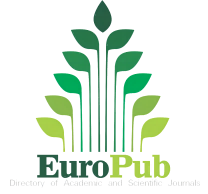Andrographolide: A review on experimental Clinical Trials and Applications
DOI:
https://doi.org/10.62767/jecacm501.5474Keywords:
Andrographis paniculata, anti-oxidant, immunity enhancer, hepatoprotective, cardioprotective, anti-inflammatory, anti-cancerAbstract
Throughout human history, plants have been used for medicinal purposes. Plants can synthesise a vast range of chemical compounds that possess biological activities and can be employed as medicines. Andrographis paniculata is an Asian medicinal herb and a well-known Chinese herbal remedy. It is referred to as “king of bitters” in English, “Chiretteverte” and “Roi des amers” in French, “Kariyatu” in Gujarati, and “Kirayat” or “Kalpanath” in Hindi. In India, it is commonly known as "kalmegh". Traditionally, it has been used to treat lung infections, cold, fever, diarrhoea, flu, syphilis, rabies, upper respiratory infections, leptospirosis, leprosy, malaria, sinusitis, HIV/AIDS, and TB, among other conditions. A chemical constituent present in the leaves of Andrographis paniculate, a diterpenoid labdane also known as andrographolide, was identified as a key bioactive component of A. paniculata in 1951. It is believed to be responsible for the various biological applications like anti-oxidant, immunity enhancer, hepatoprotective, cardioprotective, anti-inflammatory, anti-cancer, and upper respiratory tract infection. Since 1984, andrographolide and its analogues have been studied for anti-inflammatory activities using contemporary drug development strategies. The anticancer properties of andrographolide have been investigated on several cancer models, yielding promising results. This manuscript primarily focuses on the clinical aspects of andrographolide. We aim to elucidate its applications, preclinical findings, and clinical studies.
Downloads
Published
Versions
- 2024-05-20 (2)
- 2024-02-29 (1)
Data Availability Statement
The analyzed data sets generated during the study are available from the corresponding author on reasonable request.Issue
Section
License
Copyright (c) 2024 The Author(s)

This work is licensed under a Creative Commons Attribution 4.0 International License.







